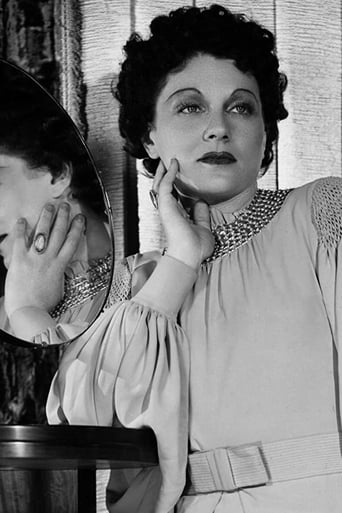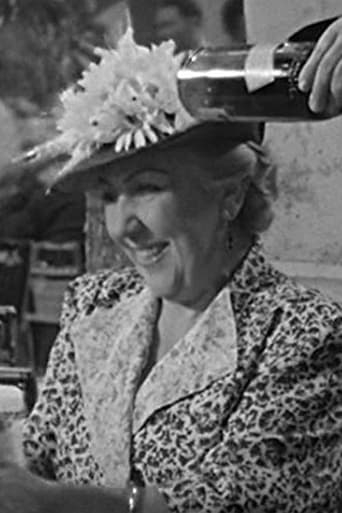Horst in Translation (filmreviews@web.de)
"Der Schatz" or "The Treasure" is a German black-and-white silent film from 1923, so not that long anymore until the movie has its 100th anniversary. The film runs for roughly 80 minutes, so looking at the era itself, it is not one of the longest or shortest German films from that time. And there were really many. The only reason why this one here is still somewhat known today, almost a century later is writer and director Georg Wilhelm Pabst, one of the most respected German filmmakers from the 1920s and you can probably even cut the "German". Pretty much all the cast members have respectable bodies of work and appeared in a handful other classics too. The one that is most known to me is Werner Krauss for sure, even if he is far from first-billed here. But looking at the cast, I must say this was a missed opportunity. I was never really interested in the treasure this film is about or in any of the main characters. I would not blame the actors, but mostly the script. It was not an engaging watch and I never felt as if I cared what happened to any of the protagonists. That's why I give it a thumbs-down and only recommend ti to the most die-hard fans of German silent film.
Marcin Kukuczka
"Your treasure house is within; it contains all you'll ever need" (Hui Hai referring to the words of St Isaac of Syria)Georg Wilhelm Pabst along with F.W. Murnau, Fritz Lang and Ernst Lubitsch belonged to the pioneering German directors. Having performed at Neue Wiener Buehne in Vienna and having worked as an assistant to Carl Froehlich, he pursued his style from the core of German Expressionism, which, on the one hand, had some common features with the Swedish cinema and, on the other hand, proved exceptional vitality and creativity hardly compared to anything else. DER SCHATZ, a film considered to be a true product of the movement, marked Pabst's directorial debut. Unfortunately, since the movie neither offers any unique features nor does it stand out among other Expressionist films (similar sentiments echo in many of these films, some widely acclaimed as 'masterpieces'), it has been often overlooked or skipped by many, even knowledgeable film scholars (a number of reviews also proves that fact). Justly so? Divided into 5 Acts, it tells a simple story ornamented with real treasures that cinema could ever offer to its audiences. An image of an old house of a bell maker is what we see at the opening sequence...an image of the same house (in a totally different condition) is what we find in the finale...in between, an uncomplicated nature of the plot strangely makes everything ambiguous, magnetizing, chaotic at certain moments and yet perfectly framed. What we soon find out appears to be a fact that deeply addresses the European reality affected fully by historical background: the house is a special place which was saved during the siege of Vienna (the failed conquest of the Ottoman Empire in the second half of the 17th century) and contains a TREASURE. Consequently, as a location, it appears to be a protagonist of this gloomy, atmospheric silent movie which, in its use of light and shadow, figures and mystery bears resemblance with such masterpieces of THE CABINET OF DR CALIGARI or Murnau's NOSFERATU. What is there in between the opening and closing...of the house's image?People and the duality of their nature...their worlds exposed by the letters of desires. The elderly among the characters are dominated undeniably by male characters with a deliberate archaic flair in looks and behaviors: the bell maker Svetocar Badali played by Albert Steinrueck and Svetelenz played by Werner Krauss. They are supposed to understand their roots better than the young who 'never think alike' (note the family scenes at the table strikingly similar to a scene in Mauritz Stiller's SIR ARNE'S TREASURE) and they begin a desperate search for the treasure, each in his own way until they find themselves on the verge of some diabolical obsession which has no limit of nerves or emotions. In this way, they symbolize the inability to live something which is inside them but, practically, they only rely on the treasure outside. The OUTSIDE WORLD becomes an ultimate goal, the idol for them, they know nothing of themselves but seem to compete. They represent the decadence of the generation and greed that cannot allow people to see deeper into reality. As a result, they become a root of destruction for the house, a destruction from within. Does the discovery make them happy? The young, a couple in love: Beate (Lucie Mannheim) and Arno (Hans Brausewetter), follow absolutely different motives. Unlike the enslaved hearts of their 'predecessors', they have another treasure to find and have for good...Their hearts are illumined because their treasure is love which sets them free. Foremost they underline or even stand for all that is within a person. The INSIDE WORLD is something they dwell in. They appear to be the opposite of the older generation in all aspects of life, particularly in the perception of identity and sexuality. Not to spoil much about the content, the moral seems to be simple at first sight, though, if you consider it more insightfully, it proves to be quite tricky and ambiguous. Sexuality which is almost personified thanks to the use of images appears to be very very modern in this movie, a revolution for the early 1920s.Another aspect of this 'modern approach' is the fusion of human features - positive and negative features - there are no black or white, baddies or goodies but quite sophisticated characters who tempt viewers towards unlocking the doors of psychoanalysis. But in my review, I would like to concentrate on yet something else that makes this rather short movie (running sole 80 minutes) an unforgettable viewing experience.DER SCHATZ stirs imagination and provokes different interpretations better than anything else because it is a real feast of images. First, the images, like the thoughts, are predominantly based on almost medieval contrast - while the 3 elderly characters appear mostly within the dark walls of the house, the young appear in a temple of nature with broad possibilities and promising prospects. The house with its shadowy corners, atmospheric staircases and lovely tree roots may stand for a serpent like captivity while flowers, butterflies,) and nature in general clearly stands for freedom. Mind you that we quite often see the butterfly in their mutual scenes. In many cultures, the butterfly is identified with the soul, with the inner life. "The treasure house is within...' them. Now the question is if you perceive it as desires or lusts; platonic idealism or Freudian stimulus and response. Idyllic utopia vs. gloomy walls; heavy iron vs. light butterflies, light vs. shadow.. The cameraman Otto Tober, with the use of figures (so often duplicated in many other films reaching the climax, perhaps in Von Sternberg's THE SCARLETT EMPRESS), contributes beautifully to the film's mood. Full credit to Max Deutsch for his lovely score, one of the first ever found in film.DER SCHATZ – THE TREASURE worth searching among the most intriguing, memorable silent films.
plaidpotato
This is very different from Pabst's later and more famous films, Pandora's Box and Diary of a Lost Girl. It's more in line with the other German Expressionist stuff of the period: gothic, shadowy, sort of ponderous, and with a simple moral message. But there's also some humor, so it's not as totally downbeat as some of the other German silents. The acting's stylized, mildly hysterical, but in a good sort of way--plenty of maniacal laughter and such. I saw it without English intertitles (and with very limited, maybe 20-30%, comprehension of German), and it was still quite understandable and quite watchable. 8/10.



